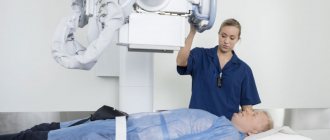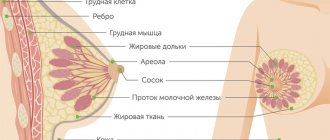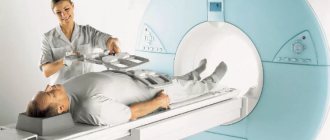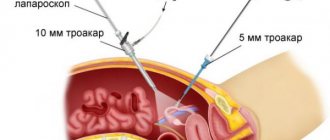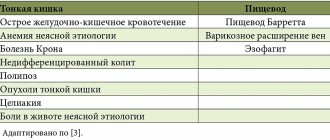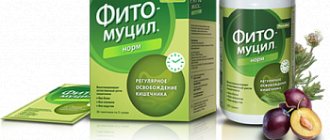Gastroscopy
- this is one of the types of endoscopic examination of the patient, which is a visual examination of the walls of the esophagus, stomach, duodenum using a special instrument with light and a camera - a gastroscope. The flexible tube of this device is inserted through the mouth and esophagus into the stomach cavity. An image of the organ cavity is transmitted to the screen.
Indications for gastroscopy
Gastroscopy is prescribed for adults and children if there is a suspicion of possible diseases of the digestive system or as a diagnosis when additional information about the patient’s health is needed. Frequent abdominal pain, heartburn, belching, bitterness in the mouth, nausea and vomiting, a constant feeling of heaviness in the stomach - all this is an indication for gastroscopy.
The procedure is also prescribed:
- if there is a suspicion of esophageal pathology, esophagitis, reflux disease
- if you suspect a peptic ulcer, gastritis, neoplasms
- if inflammation of the mucous membrane of the esophagus, stomach and duodenum is suspected
- if you suspect the presence of a foreign body in the esophagus or stomach
- when stopping bleeding in peptic ulcers
- during polyp removal
- when performing a biopsy of the esophagus or stomach
- for unreasonable weight loss
The list of indications for gastroscopy is quite extensive. The clinical manifestations of certain diseases may be similar, so only gastroscopy will help to establish the exact cause of discomfort. The diagnostic procedure is also prescribed as a prevention of possible pathologies. If your immediate family has diseases of the gastrointestinal tract, it is recommended to visit a gastroenterologist and undergo gastroscopy.
Sign up for a gastroscopy procedure
Make an appointment
Prices for gastroscopy under anesthesia
Endoscopic examination of the digestive organs can be done at the City Clinical Hospital named after. Zhadkevich in Moscow.
When choosing a medical institution to perform this manipulation, you should pay attention to the professionalism of specialists and the quality of equipment.
Don’t know where to undergo gastroscopy under anesthesia at an affordable price? Contact the State Clinical Hospital named after. Zhadkevich. Qualified specialists will perform the procedure without pain or consequences for your health.
You can get detailed information about how to undergo the gastroscopy procedure under anesthesia by phone or write to us by e-mail
Contraindications to gastroscopy
Gastroscopy is not the most complex examination method, however, as with any medical procedure, there are certain contraindications:
With caution, the gastroscopy procedure is prescribed to patients with acute inflammatory processes in the nasopharynx, enlarged cervical and retrosternal lymph nodes, large diverticula of the esophagus (deformations of the organ wall with “saccular” bulging of its layers), as well as children under 6 years of age. Young patients are given general anesthesia and the gastric mucosa is examined with a thin probe (no more than 4 mm in diameter).
Who is contraindicated for
Gastroscopy under anesthesia is not performed in a number of cases:
- stenosis, which prevents normal insertion of the device tip;
- chemical burns of mucous membranes;
- tract injuries resulting from foreign bodies;
- mediastinitis – inflammation of the tissue;
- dissecting aortic aneurysm;
- thinning of the walls of blood vessels and high risks of bleeding;
- heart attack, stroke.
Restrictions apply to patients with severe curvature of the spine, large goiter, severe forms of cardiopulmonary failure, neurological and mental disorders, and hemophilia.
Preparation for gastroscopy
In order for the study to cause minimal discomfort to the patient, and to provide the specialist with maximum information for diagnosing diseases of the esophagus and stomach, it is necessary to properly prepare for the procedure. First of all, inform the doctor about the presence of allergies to medications and inform about the constant use of medications. It is also very important to name existing chronic diseases - problems with the heart, lungs, blood.
You should collect tests in advance, without which the doctor may refuse the study:
8 hours before gastroscopy, you should completely avoid eating. Dinner should be light. It is prohibited to have breakfast in the morning. For 3 days, hot, spicy and fatty foods, strong tea and coffee, alcohol, nuts, chocolate, baked goods, citrus fruits, legumes, as well as taking medications (except for vital ones, for example, for diabetes) and any traditional medicine (chamomile or mint tea, etc.). Before the procedure, the stomach and intestines must be “clean” to ensure good passage of the probe. Smoking is prohibited several hours before the procedure, as this addiction can provoke gag reflexes. Immediately before the examination, it is necessary to empty the bladder. If the patient has dentures installed, he must remove them before the procedure. Dental structures interfere with the passage of the gastroscope. You will also have to take off your jewelry and glasses. On this day, it is not recommended to brush your teeth during your morning hygiene routine. Substances contained in toothpastes can have a negative effect on the level of acidity of gastric juice. You can rinse your mouth with warm boiled water.
Gastroscopy is not contraindicated during menstruation. It is advisable that the patient notify doctors about her condition, as severe nausea and false pain may occur. Such symptoms will interfere with a full examination of the patient.
Patients with diabetes are prescribed gastroscopy in the morning, so that half an hour after its completion they can take medications and have a snack to avoid coma.
Methods for removing biopsy material
When prescribing a procedure, various goals can be pursued:
- detection of Helicobacter pylori infection;
- determination of the benignity or malignancy of the process, study of morphological features;
- determining the degree of inflammation activity;
- for dysplasia - determination of its type;
- after cancer treatment, monitoring its effectiveness.
There are actually 2 methods used for gastric biopsy - surgical and endoscopic. The first is used during operations - the biomaterial is taken with a scalpel and urgently sent to the laboratory. The operation is paused until the results are available, which usually takes about 15 minutes. In accordance with the conclusion of the study, the volume of surgical intervention and the parts of organs removed are adjusted. This type of biopsy for stomach cancer allows you not to delay treatment, since literally every day is important.
More often, an endoscopic method is used, in which tissue sampling is combined with gastroscopy (FGDS, EGDS). For this, a flexible probe (fiberscope, endoscope) with instruments is used. If earlier manipulations were carried out “blindly,” now a camera and a flashlight are installed on the device, and water irrigation and air supply are used to smooth out the mucous membrane. The doctor has the opportunity to examine the epithelium and has complete control over the process.
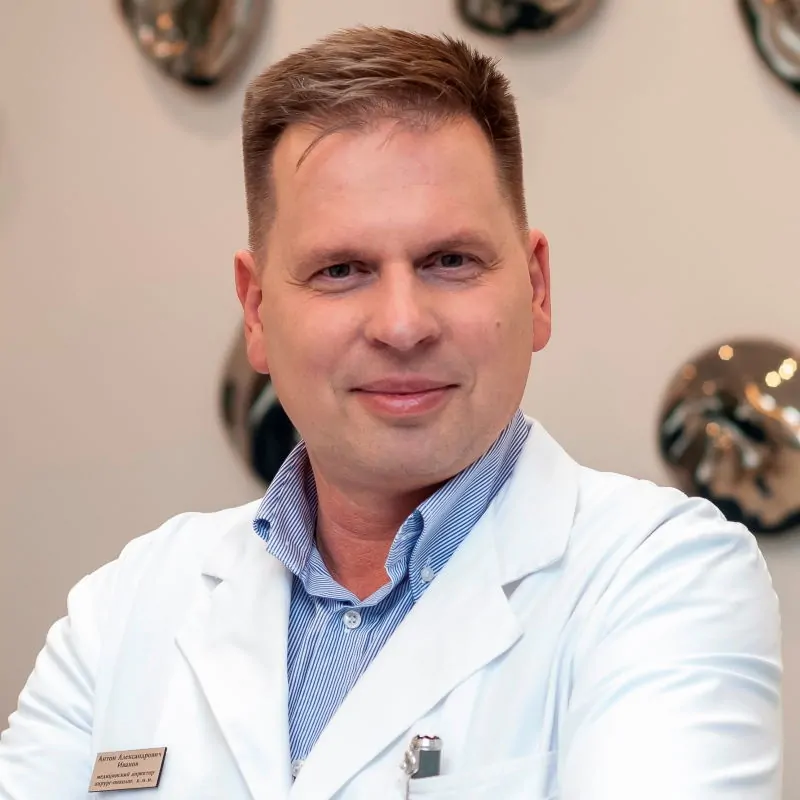
Our expert in this field:
Ivanov Anton Alexandrovich
Medical director, oncologist-surgeon, candidate of medical sciences
Call the doctor
Call the doctor
Performing a gastroscopy procedure
Gastroscopy is performed in a special room at a medical institution, most often using local anesthesia. Sometimes general anesthesia is prescribed. To relieve the gag reflex, the patient’s larynx and esophagus are subject to mandatory irrigation with the drug. The effect of the drug stops after 30-40 minutes. The endoscope and all medical instruments undergo mandatory multi-stage disinfection in antibacterial solutions. This completely eliminates the transmission of infection!
The patient lies on the couch on his left side, bending his knees to his chest. There is a nurse nearby who helps the patient during the procedure. The doctor carefully inserts the probe through the oral cavity into the esophagus and stomach, and, if necessary, into the intestine. When inserting a flexible tube, you need to breathe deeply and try to relax. The doctor will ask you to make swallowing movements. Don't be afraid of the air supplied through the tube. It is necessary for straightening the walls of the esophagus and stomach.
The resulting image is transmitted to the monitor. Based on the picture seen, the diagnosis is established or refuted. In acute cases, a biopsy or emergency treatment methods are immediately performed - stopping bleeding, removing polyps. The information obtained as a result of examination of internal organs is recorded and written to disk. The typical procedure takes approximately 15 minutes. After all the manipulations, the gastroscope is carefully removed.
During gastroscopy, the patient may experience slight discomfort - an unpleasant feeling of a foreign body inside himself. Some people experience strong vomiting, which can be stopped with calm, deep breathing.
How to prepare
Gastroscopy is performed on an empty stomach, so you must give up water and food 8-12 hours before. The only exceptions are emergency cases, in which urgent gastric emptying is performed using a tube.
It is important to remember that at least 3 days must pass after an X-ray of the gastrointestinal tract using contrast. Only after this can EGDS be performed.
Before gastroscopy under anesthesia, the doctor explains to the patient the purpose of the examination and the features of all manipulations. The procedure is carried out in a state of medicated sleep. If there is reason to suspect possible contraindications to anesthesia, additional preparation will be required. It consists of conducting a preliminary examination: ECG, laboratory tests, consultation with a therapist, etc.
Preparation also includes the processing of instruments: the endoscope and the instruments used are disinfected, which eliminates the risk of infection.
Recommendations for the patient after gastroscopy
After the examination, carried out under anesthesia, you should not drink alcohol! Food and water can be taken 1-2 hours after gastroscopy. Food and drinks should not be hot. In the next few days, preference should be given to lighter dishes with a soft consistency without seasonings and spices - fermented milk products (soft cottage cheese, yogurt, fermented baked milk), cream soup, oatmeal or semolina porridge. The patient is also recommended to lie down for about 30 minutes after the examination. During the first 24 hours, you should rest more and avoid physical activity, refusing to visit gyms and fitness clubs. It is advisable to take a short walk through the park.
If, while following all the rules of daily routine and nutrition, the patient experiences pain in the gastrointestinal tract for more than three days, constipation or diarrhea, the attending physician should be notified. It is possible that some complications arose during the procedure.
Gastroscopy helps doctors identify various diseases of the gastrointestinal tract. Compared to other methods of examining patients, gastroscopy is the most informative. Serious complications during the procedure are extremely rare. Gastroscopy is performed even on young children and pregnant women. Proper preparation and attitude of the patient will facilitate the examination, reduce discomfort, help establish a diagnosis or adjust the treatment regimen for gastrointestinal diseases.
Sign up for a gastroscopy procedure
Make an appointment
Survey results
The endoscopist receives the first results immediately during the examination. Visual examination of the internal surface of organs allows you to get a general picture of the condition and make a diagnosis: gastritis, colitis, peptic ulcer, etc. Tumors and formations are also immediately visible. If a biopsy is performed simultaneously with endoscopy, the material is sent to the laboratory for study. The results of histological or cytological examination will be ready within 5-7 days.
The conclusion of the endoscopist includes not only a description of the structural features of the organs and diagnosis, but also photos of the localization of defects when they are detected.
Our prices
- Repeated appointment with an oncologist* RUB 3,000.
- Primary appointment with a leading specialist/candidate of medical sciences (oncology)* RUB 4,250.
- Appointment with an oncologist-mammologist KMN* RUB 5,300.
- Repeated appointment with a leading specialist/candidate of medical sciences (oncology)* RUB 4,000.
- Preventive appointment with an oncologist* RUB 1,490.
- Primary appointment with an oncologist-chemotherapist* RUB 4,600.
- Repeated appointment with an oncologist-chemotherapist* RUB 4,000.
- Consultation with an oncologist on palliative care* RUB 2,000.

